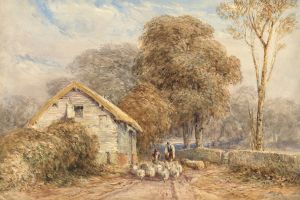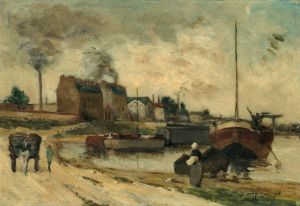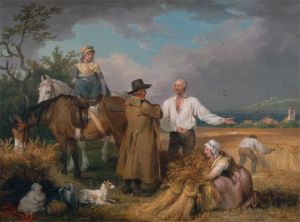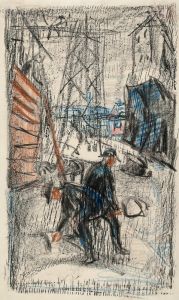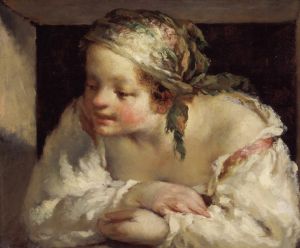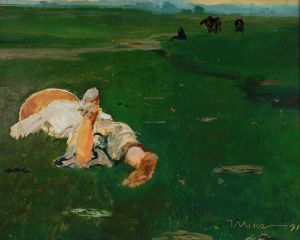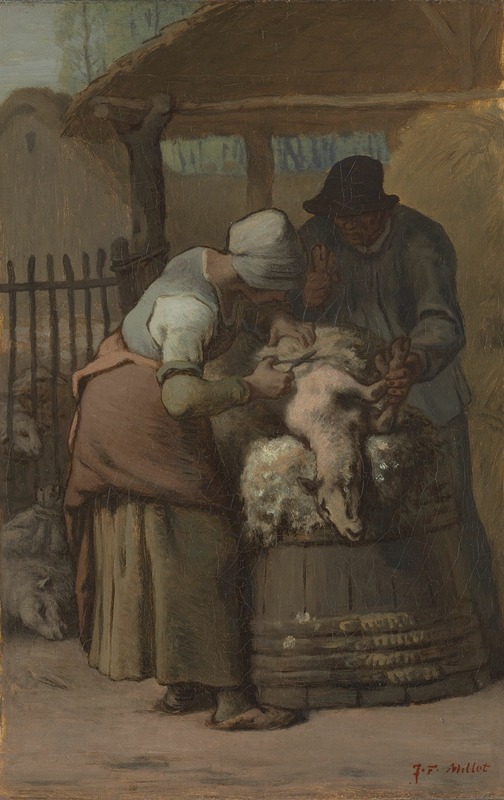
The Sheepshearers
A hand-painted replica of Jean-François Millet’s masterpiece The Sheepshearers, meticulously crafted by professional artists to capture the true essence of the original. Each piece is created with museum-quality canvas and rare mineral pigments, carefully painted by experienced artists with delicate brushstrokes and rich, layered colors to perfectly recreate the texture of the original artwork. Unlike machine-printed reproductions, this hand-painted version brings the painting to life, infused with the artist’s emotions and skill in every stroke. Whether for personal collection or home decoration, it instantly elevates the artistic atmosphere of any space.
"The Sheepshearers" is a painting by the French artist Jean-François Millet, created in 1860. Millet was a prominent figure in the Barbizon School, a movement that focused on realism and the depiction of rural life. His works often highlighted the dignity and hardship of peasant labor, and "The Sheepshearers" is a quintessential example of this theme.
The painting depicts a group of peasants engaged in the labor-intensive process of shearing sheep. The scene is set in a rural environment, likely inspired by the countryside of Barbizon, where Millet spent much of his career. The composition of the painting is carefully arranged to draw attention to the physical effort and concentration required for the task. The figures are shown in various stages of the shearing process, each absorbed in their work, which emphasizes the communal and cooperative nature of rural labor.
Millet's use of light and shadow in "The Sheepshearers" is notable. He employs a naturalistic approach to lighting, which enhances the realism of the scene. The light appears to come from a natural source, possibly the sun, casting soft shadows and highlighting the textures of the sheep's wool and the workers' clothing. This technique not only adds depth to the painting but also underscores the authenticity of the rural setting.
The artist's attention to detail is evident in the depiction of the tools and techniques used by the shearers. The shears, the positioning of the sheep, and the postures of the workers are all rendered with a high degree of accuracy, reflecting Millet's keen observation of rural life. This meticulousness helps to convey the physicality and skill involved in shearing sheep, a task that requires both strength and precision.
"The Sheepshearers" also reflects Millet's broader social and political concerns. By focusing on the labor of peasants, Millet sought to elevate the status of rural workers and draw attention to their contributions to society. At a time when industrialization was transforming the social landscape of France, Millet's work served as a reminder of the enduring importance of agricultural labor and the people who performed it.
The painting is executed in oil on canvas, a medium that Millet frequently used. The earthy tones and muted palette are characteristic of his style, which often eschewed bright colors in favor of more subdued hues that reflected the natural environment. This choice of color palette further enhances the realism of the scene and reinforces the connection between the figures and their surroundings.
"The Sheepshearers" is housed in the Musée d'Orsay in Paris, which holds an extensive collection of works by Millet and other artists of the Barbizon School. The painting is considered an important example of Millet's oeuvre and a significant contribution to the genre of rural realism in 19th-century art.
In summary, "The Sheepshearers" by Jean-François Millet is a masterful depiction of rural labor that combines meticulous detail, naturalistic lighting, and a subdued color palette to convey the dignity and importance of peasant work. It stands as a testament to Millet's skill as an artist and his commitment to portraying the lives of rural workers with empathy and respect.






